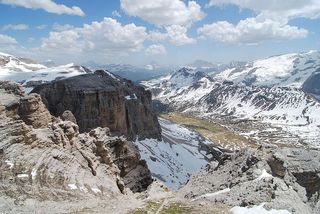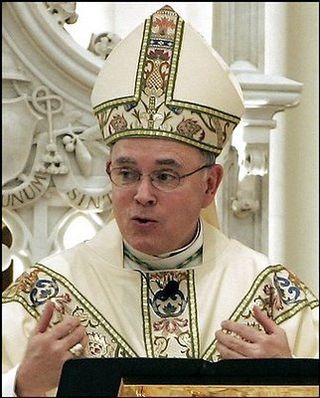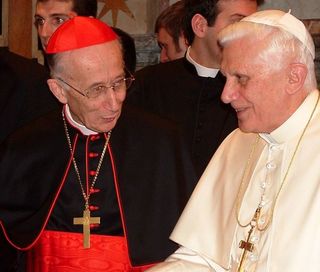That’s the message that some in the media are rapidly trying to spin.
The Times carried the blaring headline,
Pope knew priest was paedophile but allowed him to continue with ministry
From that we would expect the kind of story that has appeared in the media over and over in recent years: Back when the Pope was still a bishop, one of his priests was a paedophile but rather than bounce him from the ministry, the future pope instead covered up his crimes and allowed him to continue in ministry, perhaps by transferring him to one or more locations.
That’s the narrative we are expected to infer from the headline.
But when you read the story, the details don’t fit.
For a start, it wasn’t one of then-Cardinal Ratzinger’s priests. He was the cardinal archbishop of Munich, but the priest was from the diocese of Essen.
And Cardinal Ratzinger did not, contrary to some reports, send the priest for therapy—or return him to ministry.
He allowed the priest to stay in a rectory so that he could receive treatment in Munich.
According to Phil Lawler,
There is no evidence that the Pope was aware the accused priest was an accused pedophile; he was evidently informed only that the priest had been guilty of sexual improprieties.
So what we have, apparently, is a situation in which the bishop of Essen (or someone) came to Cardinal Ratzinger and said, “There’s a priest from the diocese of Essen who has committed sexual improprieties and needs to receive counselling. Can you put him up in a rectory while he is given psychological therapy in Munich?”
And Ratzinger said yes.
How sinister is that?
This wasn’t his priest. Whether the priest would return to ministry after counselling wasn’t his decision. All he’s doing is allowing the man to have a room in a local rectory while he undergoes therapy.
And what if it turns out he did know that the sexual improprieties involved children?
At that time (1980) it was commonly thought that paedophiles could be cured through psychological counselling.
Even the British religion reporter Ruth Gledhill, writes:
What is often forgotten is how little was known of paedophilia. It was believed it could be cured, and that penitence was tantamount to recovery.
So, the narrative of a bishop secretively transferring his priests—who he knows are incurable, repeat offenders—from parish to parish does not apply.
However, at some point, Lawler notes,
the vicar general of the Munich archdiocese made the decision to let the accused priest help out at a parish. That vicar general, Msgr. Gerhard Gruber, says that he made that decision on his own, without consulting the cardinal. The future Pope never knew about it, he testifies. Several years later, long after Cardinal Ratzinger had moved to a new assignment at the Vatican, the priest was again accused of sexual abuse.
That time the priest was convicted and punished according to German law.
But we still don’t have a set of facts that supports the pope-as-paedophile-enabler narrative that the Times wants to suggest.
Even Ruth Gledhill (employed by the Times) acknowledges:
The latest scandal coming out of Germany is not enough to threaten the Pope or the Church. But on top of a succession of damaging revelations it can only increase the damage being done to its moral authority on the world stage. The killer fact that could bring down the Pope or Church probably does not even exist.
The Pope is pretty unassailable. He is not elected, he is a monarch, and the centralisation that has taken place under the last two Popes has cemented that power. Pope Benedict XVI has also indicated in his three encyclicals the depths of his own integrity and intellectual rigour.
Setting aside Gledhill’s failure to note basic facts of the subject she reports on (the pope is elected; remember that conclave thingie in 2005? how we got Pope Benedict? presumably she means that he doesn’t have to face re-election), I think she’s right.
Based on what we know today, there isn’t enough “there” there.
What do you think?







